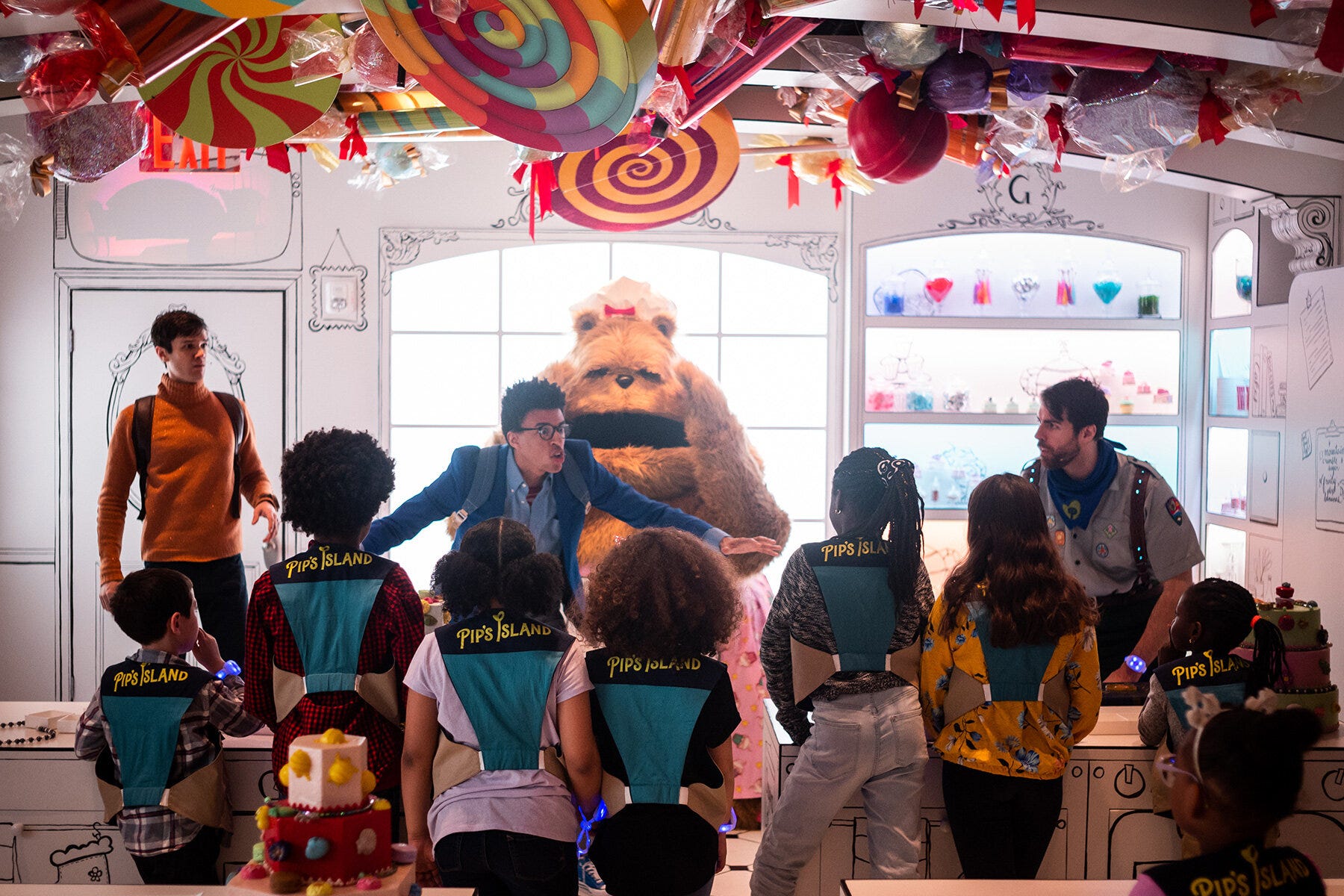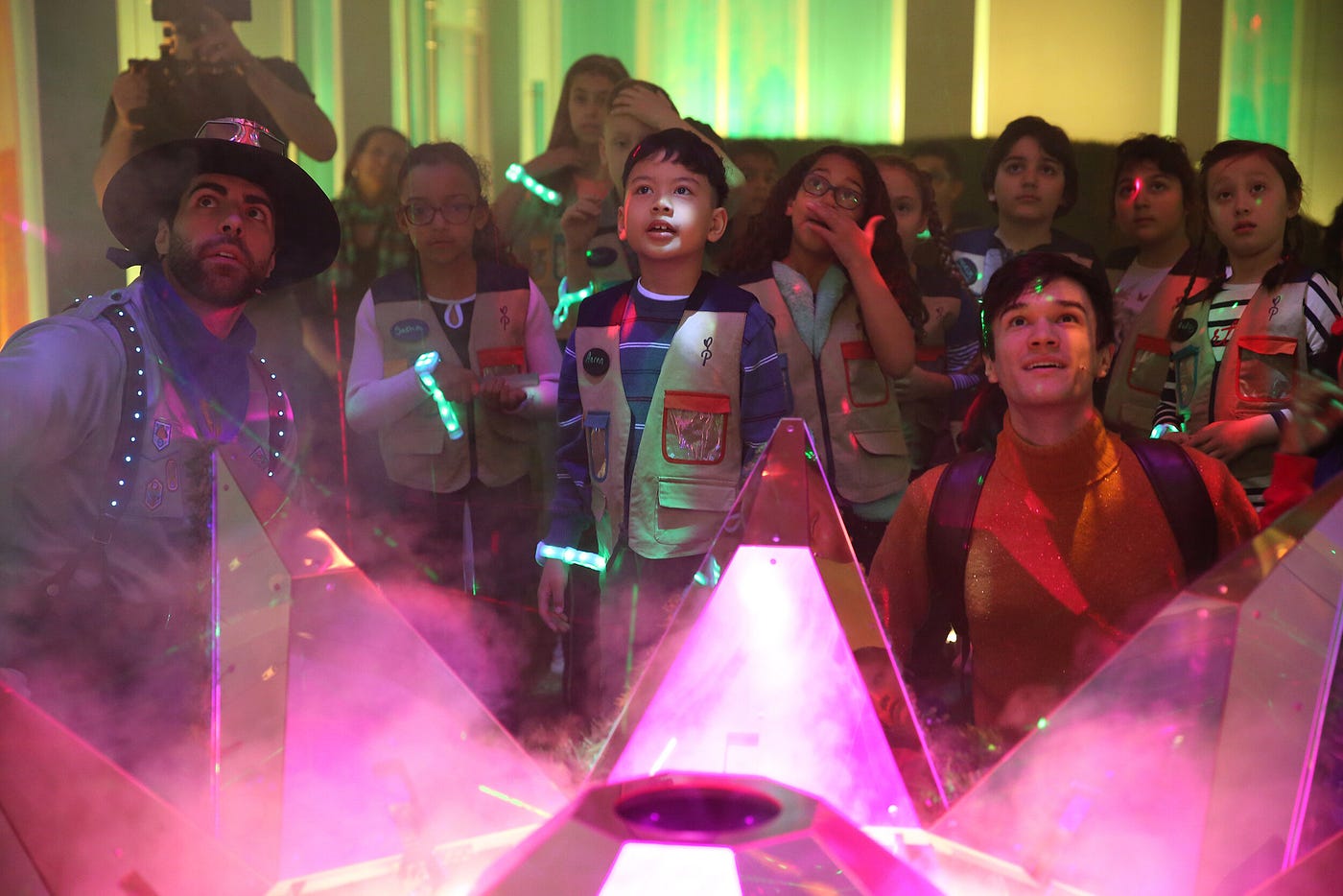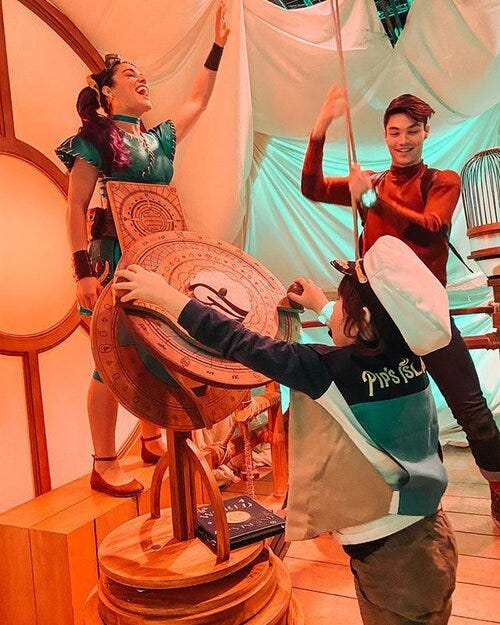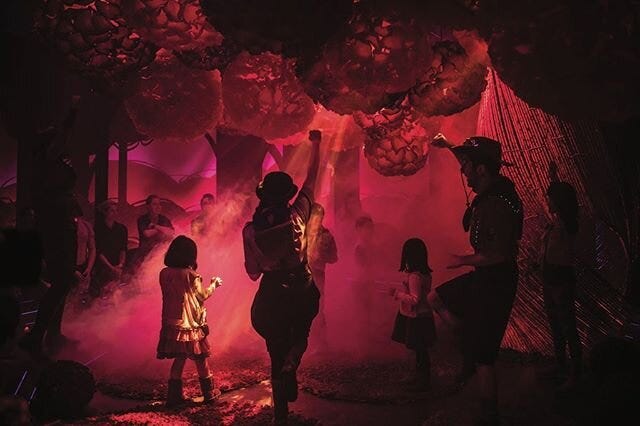‘Pip’s Island’ Takes Children on the Adventure of a Lifetime (Review)
An immersive experience in Manhattan lets kids harness their imaginations


The first book series I ever really fell in love with was C.S. Lewis’ The Chronicles of Narnia. I was enchanted by the idea of finding a hidden portal to another world, one filled with magical creatures, evil villains, and ample opportunity for adventure. I checked every wardrobe I came across for a secret door that might lead me to Narnia. Portals are such a powerful theme in literature, especially children’s literature, because they offer an opportunity to leave behind the banal day to day of the real world and enter a fantastical world where you are a queen, a wizard, or a lost boy.
But reading a book in my bedroom left me with only my imagination to conjure an alternate reality. Imagination is powerful, but there’s nothing to taste, touch, smell, or hear unless you get creative with food, props, or toys. Providing a tactile environment as a jumping off point for the imagination is where Pip’s Island creates a truly magical experience: it takes a child through a portal — though instead of a wardrobe or train platform, it is tucked away in a normal-looking building in Times Square — and spits them out in a world filled with magic and adventure. In this world, the children meet new people, talking animals, and fantastical creatures. They use imaginary technologies, solve puzzles, and work together as a team to impact the world of Pip’s Island.

In Pip’s Island, children become the Explorers of Expedition 12, led by madcap scout leader Dottie (Bebe Tabickman). Each child is given an Explorer’s vest and a “Legendarium” — a device worn on the wrist to help them harness the energy of the mysterious “sparks,” which Expedition 12 is on a quest to find. Adults are cast as Assistant Explorers, there to provide moral support to the explorers as they journey to a place called “The Island.”
Our first mission is to help Dottie contact Griffin Bandini, the leader of the Exceptional Explorers Society, using an old telephone with mysterious and magical properties. After the Explorers figure out how to speak with Griffin, he tells us that the island is in grave danger. The island’s guardian, Amperes Wattson, has been captured by the villainous Joules Volter, who wants to take control of the Island’s source of energy, the lighthouse. Volter hates the light, and plans to cast the Island into darkness.
With a sense of urgency and excitement, our group travels through a forest, where we meet a former scout leader who teaches the Explorers how to use their Legendariums. We pass through the forest and emerge in a grassy field where we find the titular Pip. He explains we must next find the crystal shards; these shards power a communication device that has been destroyed by Joules Volters’ henchmen. The henchmen, two adorably rotund mole puppets, emerge from a tunnel to mock and discourage us as we hunt for the shards. After we find the shards and successfully rebuild the communication device, we are able to call the trapped Wattson, who begs us to come to his rescue. Next, we crawl through the mole tunnels which reek of damp earth and something unidentifiable but sour-smelling, and emerge in a sweet-smelling bakeshop. The shop is run by a giant Ewok-esque creature named Mrs. Grumbleplum, who has accidentally swallowed Pip’s best friend Finn (Alexander Sanders), and will only be coerced to throw him up if we decorate and feed her cakes. The Explorers set to work, raiding the shop’s displays and refrigerators for fruits and candies to decorate the plain cakes and cupcakes that sit atop several tables. After the cakes are assembled and fed to Mrs. Grumbleplum, she lets out a giant belch and Finn rolls out to raucous applause from the Explorers.

After Finn’s rescue from Mrs. Grumbleplum’s stomach, we move forward through several other locations: a flying pirate ship run by the purple-ponytailed Pebble, the underwater home of Shelly the mermaid, and finally, the lair of Joules Volter. At each location, the Explorers must work together to harness “spark” energy, created by using their collective imaginations and working as a team to solve problems.
Get Cheyenne Ligon’s stories in your inbox
Join Medium for free to get updates from this writer.
SubscribeSubscribe
After Expedition 12 harnesses its last spark and uses it to defeat the evil Joules Volter, Dottie collects the explorers’ vests and Legendariums and gives everyone a hug. Pip and his friends then bid us farewell before we enter another portal — in the form of an elevator — that would take us back to the real world. My Explorer and I felt a bit like the Pevensie children, tumbling back into the harsh reality of Times Square after our fantasy adventure on the Island.
Over a post-show ice cream cone, we discuss the merits of Pip’s Island: the actors are wonderful and well-practiced in the art of conversing with and improvising alongside small children. The set design is impeccable and made the space feel much larger than it actually was. The incorporation of smells provides a level of detail that I rarely see in immersive shows. But the best part of Pip’s Island for both me and the kid I took is the art, which looked like a storybook drawn by Wes Anderson. Amperes Wattson is a cheeky lightbulb-headed man in a plaid suit. His helpers, the rotund yellow Flambeaus, are adorable. Even the evil mole puppets were cute.
For the right child (more on that below), Pip’s Island can be a magical and engaging experience. However, Pip’s Island is not a good fit for every child. It advertises itself as a fantasy adventure for kids aged 4–10 years old. But anyone who has spent time around kids knows there’s a big difference between a four-year-old and a ten-year-old. A huge part of the experience depends on the overall expedition’s age makeup. A younger child might be lost in a group full of older children, and an older child will likely find the experience to be baby-ish if it’s filled only with four- and five-year-olds. My Explorer was a nine-year-old who had a wonderful time, but who was initially uneasy until other “big kids” showed up. Parents and caregivers know what their children like and what their maturity levels are: if you think your kid is too old or young for this, you’re probably right.

For adult enthusiasts who are wondering if they should go without a child, sadly, my recommendation is no. Adult participation is extremely limited and only children can participate as Explorers. If you want to explore the gorgeous set and see what good immersive theatre for children looks like, I suggest you find an Explorer of your own — preferably one who likes games, stories, and imaginary play — to bring along.
Explorers and their adult helpers agree: the world created by Pip’s Island is not only thoroughly immersive, but it’s a delightful place to find oneself immersed. To go on a fantasy adventure is a dream come true, and there’s a portal waiting to take you on one right in the middle of Manhattan.
Pip’s Island is currently on break but will return later this year.
NoPro is a labor of love made possible by our generous Patreon backers. Join them today!
In addition to the No Proscenium web site, our podcast, and our newsletters, you can find NoPro on Twitter, Facebook, YouTube, Instagram, in the Facebook community Everything Immersive, and on our Slack forum.
Office facilities provided by Thymele Arts, in Los Angeles, CA.